PureVPN
PureVPN has been in the VPN business since 2007, so it's no surprise that the company has built up a lengthy list of features.
The service covers most of the technical basics: strong encryption via OpenVPN and IKEv2 (WireGuard is in beta), DNS and IPv6 leak protection, torrent support, split tunneling to control which apps use the VPN, and a smart kill switch to protect you if the VPN drops.
Platform support is a highlight, with dedicated apps for Windows, Mac, iOS, Android and Linux, extensions for Chrome and Firefox, and more downloads and tutorials to help you set it up on routers, Kodi, Android TV, Amazon's Fire TV Stick and more.
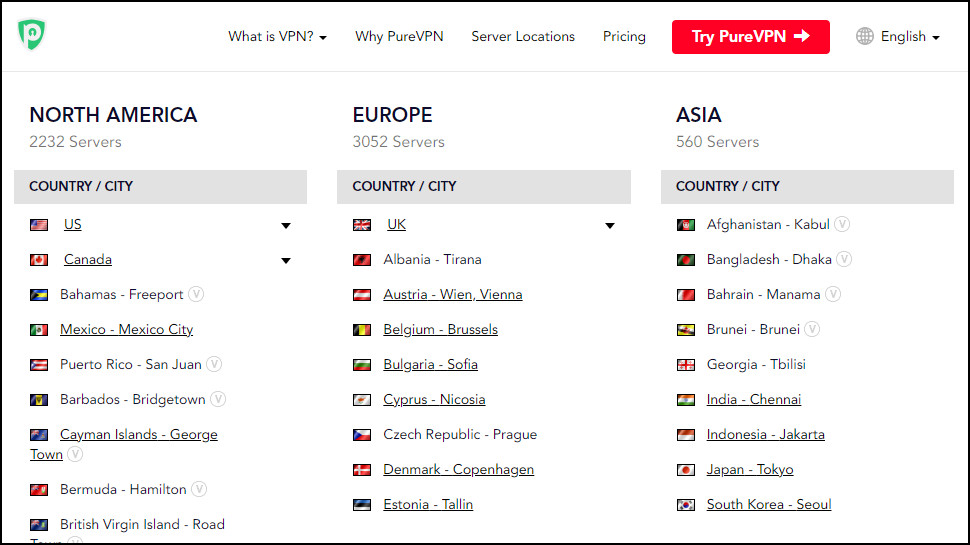
You can use the service on up to 10 devices simultaneously, and in an unusual bonus, PureVPN allows you to share these 10 slots with your family. If you've four people with phones, say, they can each install and use PureVPN with their own login, and you'll still be able to connect six other devices at home.
- Want to try PureVPN? Check out the website here
PureVPN has reduced its network coverage recently. At the beginning of 2021 it claimed to have 6,500 servers across 180+ locations and 140+ countries; as we write, it's still 6,500 servers, but you now get 86 locations and 78 countries.
This restructuring apparently involved removing slower virtual servers, though, which isn't necessarily a bad idea. And even PureVPN's reduced location count is way more than many competitors (StrongVPN has 46 locations in 35 countries, for instance, and Mozilla VPN has 40 locations in 30 countries).
Recent improvements to the service include upgrading more servers from 10Gbps connections to 20Gbps. A blog post announced the upgrade for servers in London, Manchester and Washington DC, and PureVPN says more locations will 'go live by the end of this year.'
Elsewhere, the company has relocated from Hong Kong to the British Virgin Islands. Perhaps best of all, it's had a new no logging audit (more on that below).
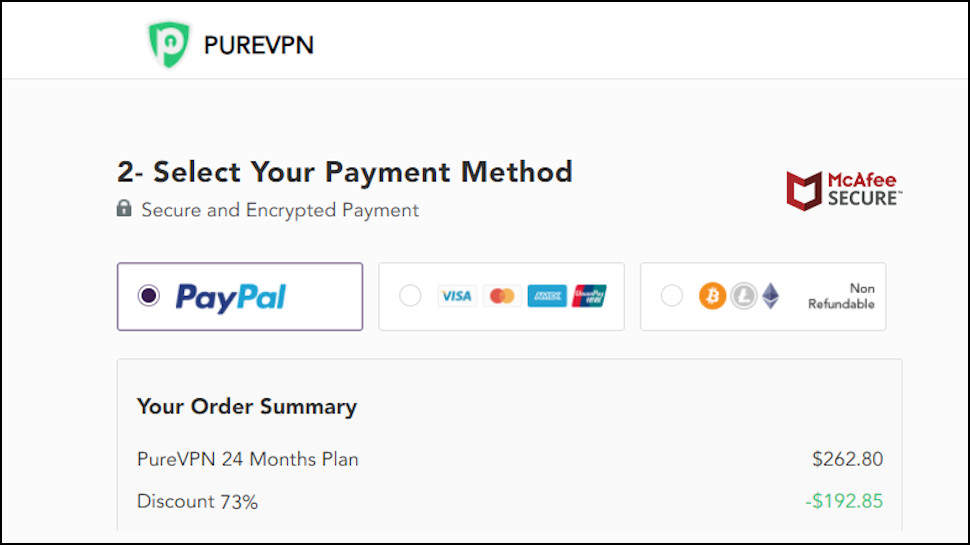
PureVPN pricing
Pricing starts fractionally higher than average at $10.95 billed monthly.
The annual plan looks good value at $3.74 a month, especially as that's covering up to 10 family members. But that's partly due to a one-off discount, and it renews at $5.83.
A special two-year plan is priced at $2.91 a month. Looks good to us, but it also renews on the regular $5.83 a month annual plan.
The shopping cart offered us plenty of extras, including dedicated IPs, port forwarding and DDOS protection. We clicked the Buy option for each, and boxes opened asking us to choose a country. These didn't display any country list, though, so we couldn't purchase anything. We tried Chrome and Edge, regular and incognito windows to rule out browser issues, but the site didn't work anywhere.
Annoying, but also a good chance to test support. We opened a chat window, an agent appeared in under a minute, and we explained that we weren't able to buy or even view any options. The minutes ticked by. This must mean the agent was checking what we said, right?
Five minutes later we got this response: 'Please subscribe to your desired plan by accessing the link below and enjoy complete internet freedom: https://ift.tt/3CPtnwh.'
Nope; no sign they'd understood anything we said.
If PureVPN's website is actually working when you visit, dedicated IPs are actually very cheap at $2.99 a month for IPs in the US, UK, Singapore, Canada, Germany, Malta and Australia. Private Internet Access, NordVPN, Astrill and others charge $5 or more.
If you need DDoS, that's an extra $3.99 a month.
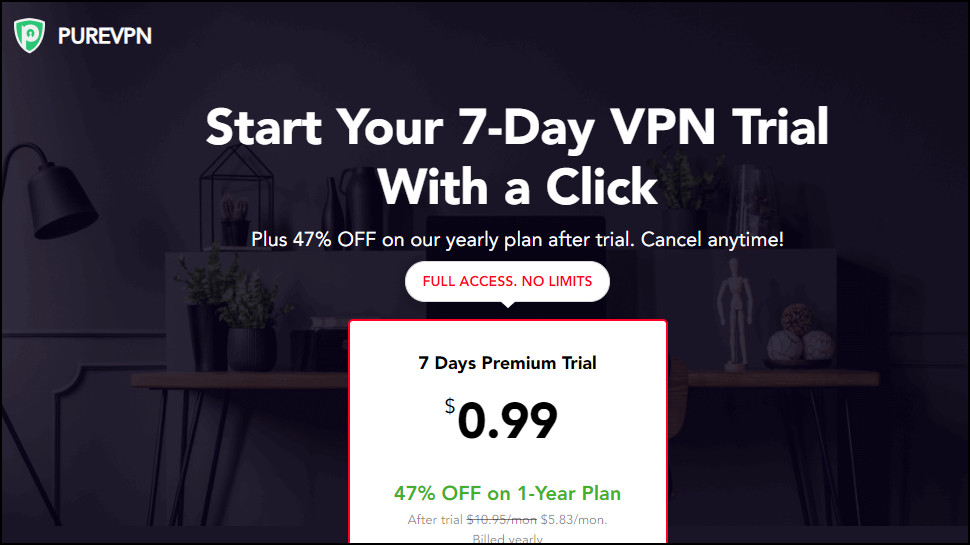
If you're intrigued, there's a 7-day trial – well, sort of. The catch is you must hand over $1, but the trial gives you plenty of time to see if the service does what you need, and if you cancel your account before the week is up, you get that dollar back.
If you sign up for a full plan and you're unhappy, there's a 31-day money-back guarantee, with no dubious clauses in the small print to catch you out. If you're unhappy, just send an email and ask for a refund.
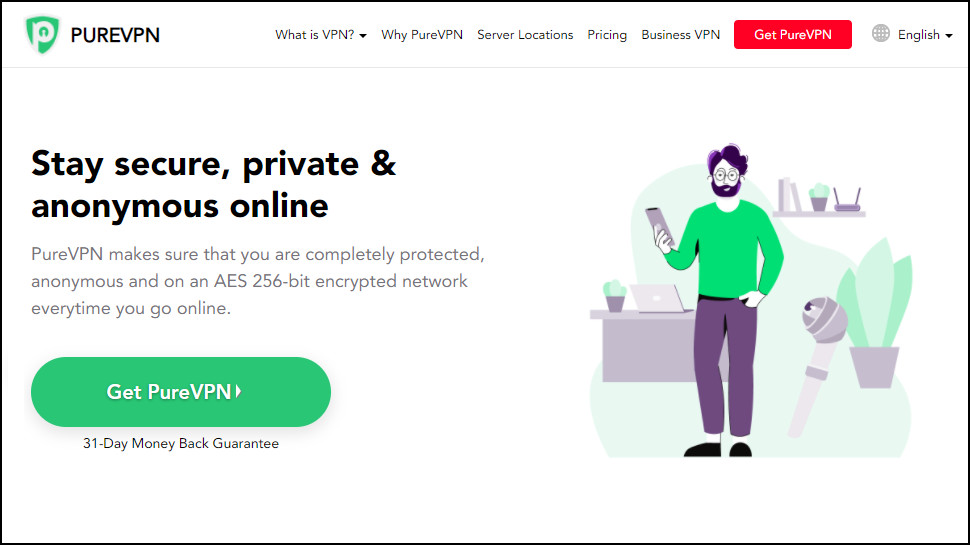
Privacy and logging
PureVPN's Privacy Policy gets off to a good start, with a lengthy list of all the data the service doesn't log: 'We DO NOT keep any record of your browsing activities, connection logs, records of the VPN IPs assigned to you, your original IPs, your connection time, the history of your browsing, the sites you visited, your outgoing traffic, the content or data you accessed, or the DNS queries generated by you.'
Sounds great! But it's a little oversimplified. The company says at the top of the page that it doesn't maintain connection logs, for instance, but scroll down and there's a section titled 'Information Included in VPN Connection Logs' where it lists the details it does collect. Namely the day you connected to a specific location, your ISP, the connection length, how many connections you make, and the overall total of bandwidth you use (not per connection, apparently).
There's no logging of origin IP, destination IP, the specific time you connected or your activities afterwards, so this limited data is most unlikely to compromise your privacy. But we think it's a bad idea to say 'we don't record your connection logs' at the top of the page, then, just a little further down, list the ways that connections are logged.
The policy also states that PureVPN employs 'a few tools' in its apps to 'conduct VPN diagnostics and monitor crash reports.' But then it goes on to list Google Analytics, iTunes, Crashlytics, Apptentive, Firebase, New Relic, MixPanel and Facebook Pixel, which may be more than you expected.
This kind of crash reporting isn't uncommon, but we expect it to be optional, and that's not the case here. There's no 'Send crash data?' option in Settings – PureVPN sends it regardless (and if you don't read the privacy policy, you'd never even know this was happening).
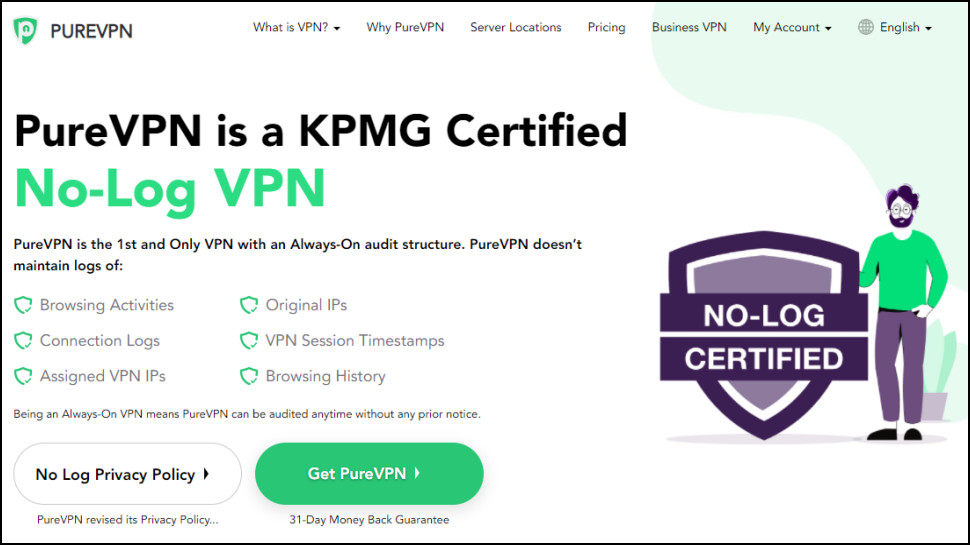
No logging audit
In 2020 PureVPN announced it had passed a no logging audit by KPMG, which concluded that the service doesn't log a user's origin IP address, a user's assigned VPN IP, the specific time when a user connects to a VPN server, or log a user's activities through its VPN connection.
PureVPN also says it opted for an 'always-on' audit policy, which means KPMG can 'initiate a non-scheduled privacy audit at any time of the year, without any prior notice.' Sure enough, in August 2021, the company reported it had passed a second no logging audit.
These checks appear to be thorough, with PureVPN saying they involve 'the inspection of our complex infrastructure, server configurations, codebase, technical data logs, and global servers', along with 'interviews of our personnel who are involved in server maintenance and database handling.'
The reports haven't been made public, so you can't check out the details for yourself. And they're only attempting to verify the main no logging policy – they don't look for privacy issues in general.
Still, we're not complaining: even with these limitations, there's vastly more reassurance here than you'll get with most VPNs. Hopefully PureVPN will continue with regular audits, and make the full reports available, not just a sentence or two.
Apps
Signing up with PureVPN is easy enough, and we were glad to see the company has restored its option to pay by Bitcoin (via CoinGate), as well as credit card and PayPal.
After parting with our cash, the website pointed us to download links for Windows, Mac, iOS, Android, Linux, the browser extensions and more. We grabbed the Windows client, and as it was downloading, a welcome email arrived with login details.
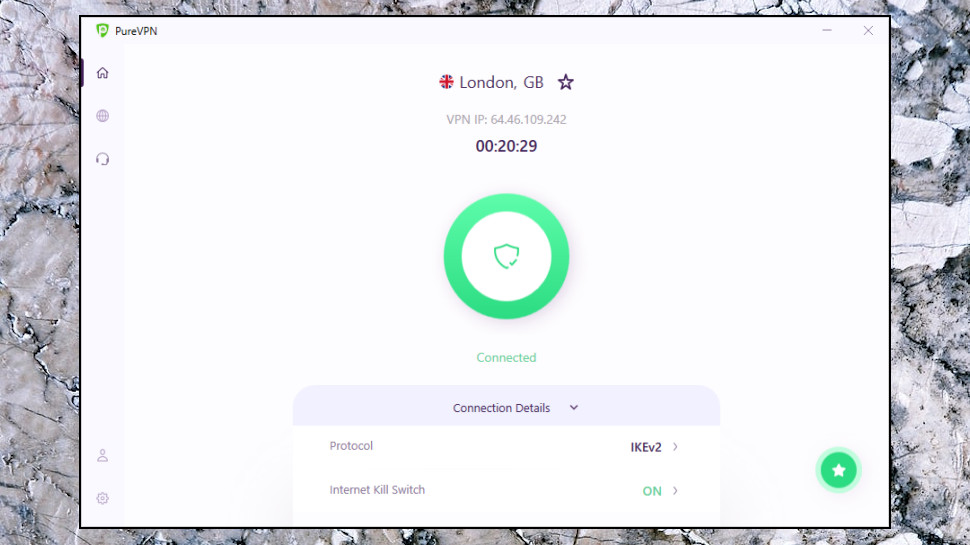
The app interface is plain and very simple, in fact mostly just white space. A status panel displays the recommended location, and tapping on the location list displays more. There's a big On/Off button to connect and disconnect, and some tiny sidebar icons for other app areas (Settings, Help, Account).
The location picker is better than most, with a Recent Locations list, a Favorites system, and a searchable list of countries with ping times to help you spot the fastest.
Clicking an arrow to the right of a country expands it to list any cities. That's a familiar idea, but most VPN apps only display that kind of 'expand me' indicator when a country has multiple locations. PureVPN does it for all countries, so we regularly expanded a list to find it included only one city.
There's another issue in choosing a preferred P2P location. 'Pick one with a P2P icon', says the PureVPN website. Great, except during our review, the Windows app didn't display the P2P label. This was only visible on the mobile apps.
Connection times were fast at around three seconds for IKEv2, four to five seconds for OpenVPN (we've had other apps keep us waiting 10 to 20 seconds with OpenVPN). Desktop notifications alert you when you're connected.
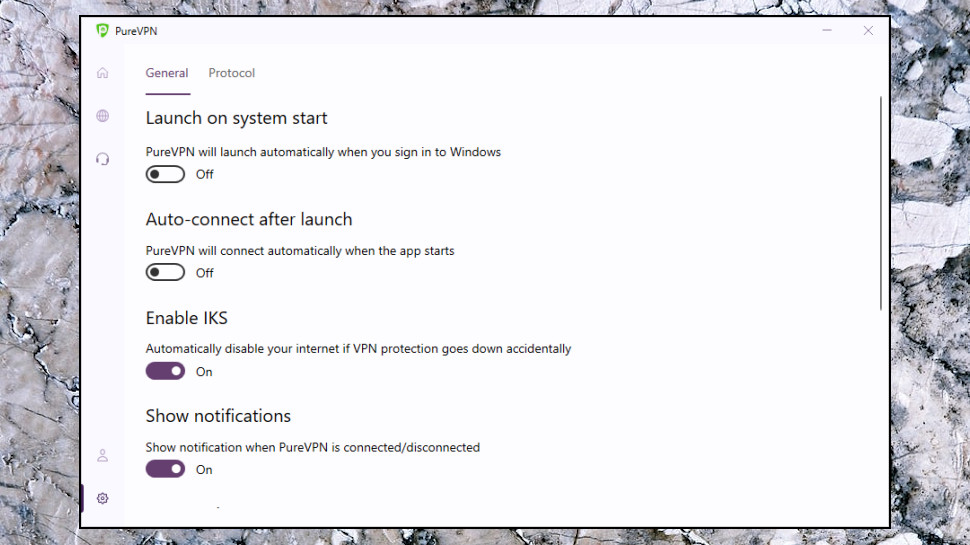
The app has relatively few settings. A kill switch blocks your internet connection if the VPN drops, plus there's a choice of IKEv2 and OpenVPN TCP/UDP protocols, and split tunneling allows you to choose which apps use the VPN, and which don't.
There are a handful of other standard options – automatically launch when Windows starts, turn notifications on/off – but the IPv6 leak protection and multi-port options we saw last time have gone.
A Help button includes a limited and poorly presented FAQ. This has only nine items, answers are extremely basic, and some of the answers scroll off the bottom of the page and can't be viewed (there's no scroll bar).
You can at least submit a ticket from within the app, or open a live chat window, but this also isn't ideal. When we clicked the Chat button, it opened a browser tab at a link similar to https://ift.tt/2QxvYrO, which wasn't even branded PureVPN. It's probably staffed entirely by PureVPN employees, and it's all entirely safe. But it would still be reassuring if the live chat window opened on the PureVPN site, rather than some third-party service that most users won't recognize.
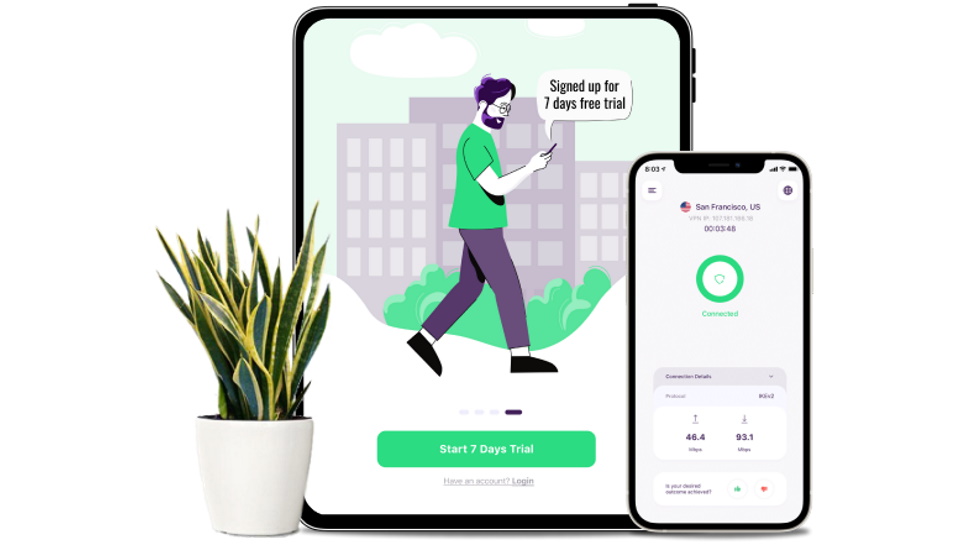
Mobile apps
We took a look at PureVPN's Android app, and it was much the same story as the Windows version. It has an almost identical interface, the same choice of protocols (OpenVPN or IKEv2) and a split tunneling system.
The website proudly claims that 'PureVPN is one of the few best VPN providers which offers an Android Kill Switch that seamlessly integrates and works flawlessly', but we didn't see any kill switch in the settings. There are no automatic launch or connect options, either.
The iOS app has a slightly different interface, with a sidebar to the left of the location list and Connect screen, but essentially works in the same way.
The feature set is a little different. The iOS version gains the ability to automatically connect when you access particular websites (but not when you access untrusted networks), and to automatically reconnect if the connection drops. But it doesn't have Android's split tunneling system.
It's good to see these features available somewhere in the range, but if you use apps on several platforms, these differences are likely to be annoying.
Put it all together and PureVPN's apps cover the basics well enough. Just having a Favorites system and Recent Location list makes it easier to reconnect, and puts the apps ahead of many competitors. But as we've seen, there are issues here, too, and the apps look a little underpowered compared to the better mobile apps from rival VPNs out there.
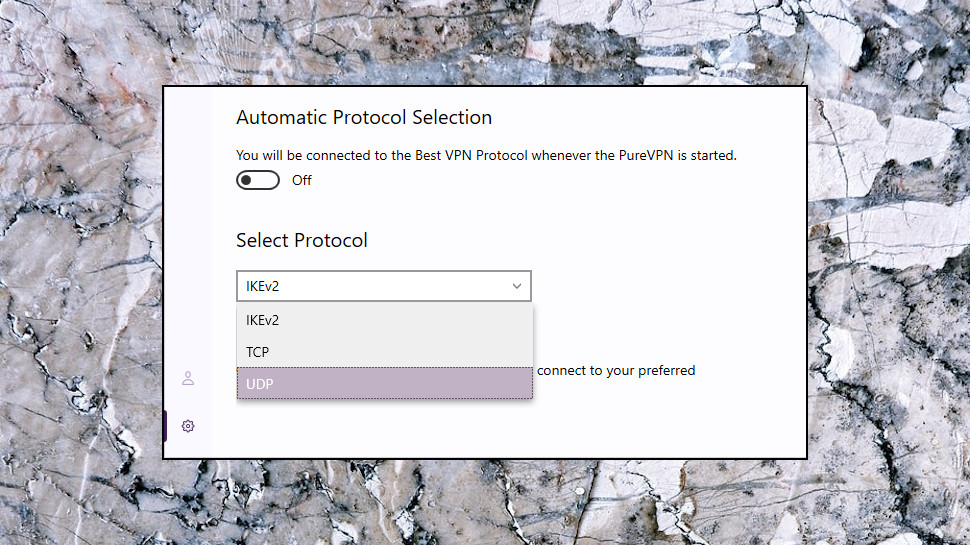
Windows app testing
We've found a number of nasty technical issues with PureVPN's Windows app in previous reviews, but would the latest version be any better?
IKEv2 connections are now set up with the best possible security. They require encryption, don't save your credentials locally, and IPv6 is disabled by default.
The odd protocol handling we noticed last time (choose OpenVPN UDP, the app connects via IKEv2) has been fixed. Choose a preferred protocol and that's the one the app will use. (Although, conveniently, it can also switch to another protocol if the first one fails.)
Finally, we checked out the app kill switch. In theory this should block internet access if the VPN drops, ensuring your data won't be transmitted over an alternative unencrypted connection. But it didn't always quite work out this way.
We ran a tool which repeatedly checked and displayed our external IP address, then tried various ways of forcibly closing the connection. Often, we saw our regular IP address appear once the VPN dropped, which means a request had successfully travelled (unprotected) through our regular connection. That's bad news, but the app did at least reconnect very quickly, and our IKEv2 connections were typically exposed for no more than eight seconds.
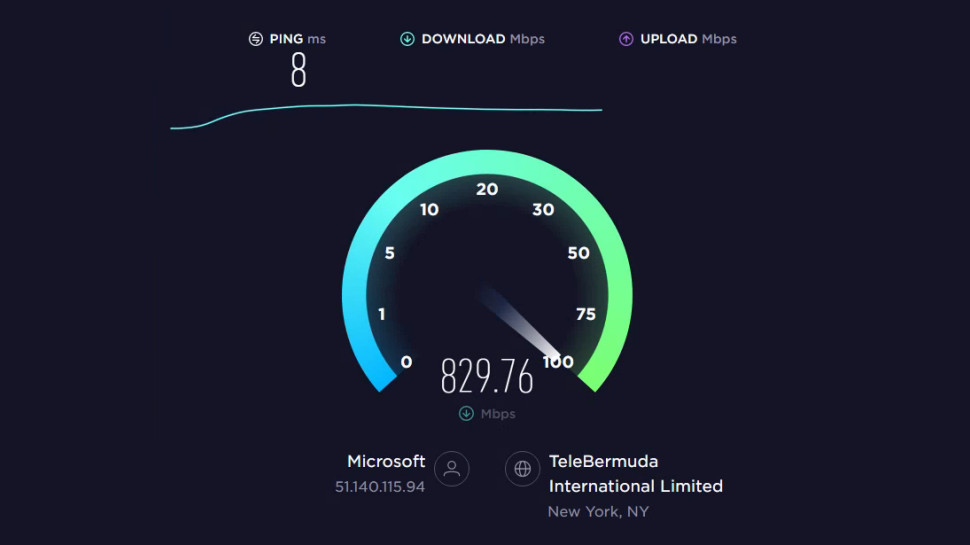
Performance
We measured PureVPN speeds from US and UK locations, using several performance testing sites and services (SpeedTest's website and command line app, TestMy.net, Netflix's Fast.com and more). We check the download speeds at least five times from each site, then check again using another protocol, before repeating this all over again in an evening session.
UK OpenVPN speeds were 270Mbps, placing PureVPN in the upper mid-range of our recent results. The company can't match Hide.me (390Mbps) or ProtonVPN (400-460Mbps), but it still outperforms some big names (IPVanish reached 140-150Mbps, CyberGhost hit 170-210Mbps).
UK IKEv2 speeds were poor, though, at 100-110Mbps. That's very similar to the 125Mbps we saw in our last review, suggesting this isn't just a blip.
A testing issue (our fault, not PureVPN's) meant we don't have US IKEv2 figures, but OpenVPN downloads were a little down at 210-220Mbps.
There's enough speed here for many situations, but PureVPN's peak performance lags well behind the competition. Most VPNs with WireGuard support reach 400Mbps in testing, and CyberGhost, IPVanish, Mozilla, NordVPN and a few others have hit 750Mbps and more.
Keep in mind that although we take more than 100 speed measurements of each VPN, you may see very different results depending on your location and setup, so it's worth taking the 7-trial and running a few speed tests of your own.
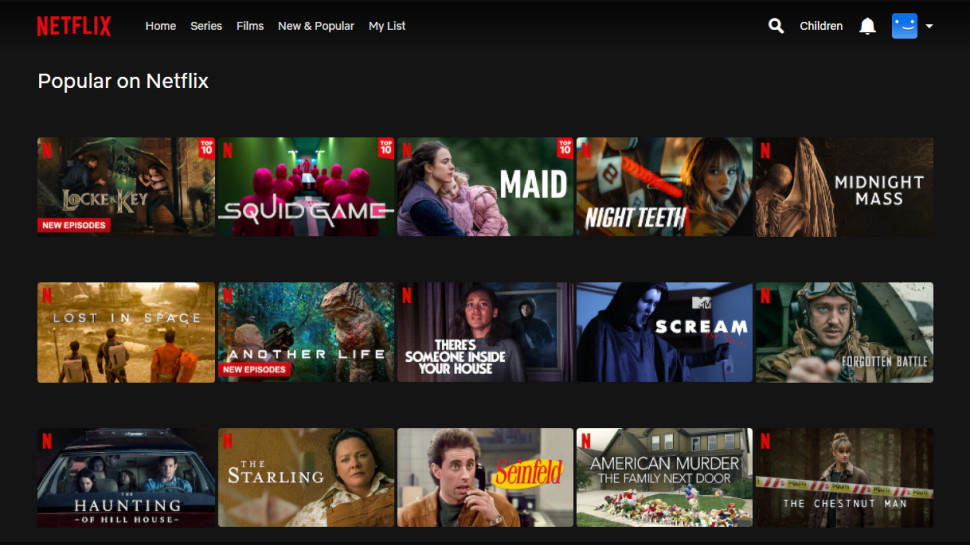
Netflix and streaming
Most VPNs claim they let you access geoblocked content from anywhere in the world, and PureVPN is no exception. 'Movies, TV shows or sporting events; PureVPN allows you instant and unrestricted access to your favorite content', the website claims.
The apps don't have specialist streaming locations, so you're left to choose a server in the country you need, connect, and see if your streaming service is accessible.
That worked just fine with BBC iPlayer, where PureVPN got us complete access from all three of our test connections.
It was the same story with US Netflix, where we successfully streamed content with all three of our test locations.
The company failed to get us into Amazon Prime Video, unfortunately, but our testing ended on a positive note with PureVPN successfully unblocking Disney Plus, again from all three test locations, a decent performance overall.
If unblocking is a top priority, though, providers such as CyberGhost, ExpressVPN, Hide.me, Private Internet Access, ProtonVPN and Surfshark all got us into every one of our test sites.
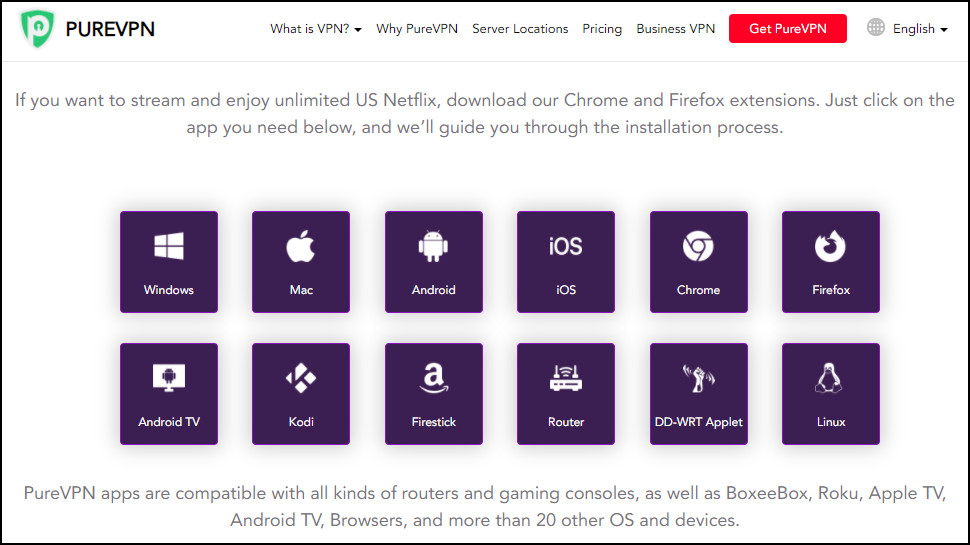
Support
Accessing PureVPN's support pages proved more difficult than we expected, as Chrome gave us a 'this site can't be reached' error when we clicked the link.
We noticed the Support link was incorrect, pointing to support.www.purevpn.com rather than support.purevpn.com. We stripped out the extra 'www' and got in. Not too much hassle, but it doesn't create a good impression if users might need support to even access the Support site.
Get past the initial hassles and PureVPN has a large support site with a huge number of tutorials and troubleshooting guides. The opening page points you to categories like Setup Guides, Troubleshoot, FAQ and Account and Billing, for instance, and most of these sections include more content than you'd expect.
The Setup Guide has subsections for 15 platforms, for instance (yes, really), and even some of those individual sections have more content than the entire support site of lesser VPNs.
There's a lot of information here, and some unusual and welcome touches. You don't have to bookmark a particular tutorial to view it later in your browser, for instance – in many cases you can download a PDF for more convenient offline reading.
Articles aren't always fully up to date, though, and some contain information on features in the old apps without making it clear that they're not included in the latest releases of the software.
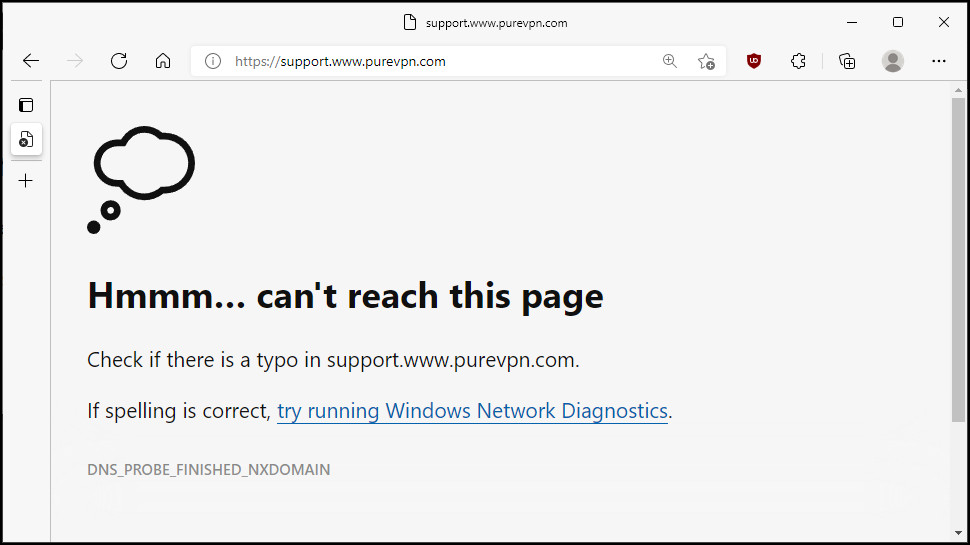
A Search box allows you to search articles for particular keywords. Or, at least, that's what we expected. In reality, whatever keyword we entered, PureVPN just displayed an 'Error 404 - Page Not Found' message.
A few articles are so inadequate that they're almost dangerous. The OpenVPN Manual Setup Guide includes pointers to setting up OpenVPN on most platforms, for instance. Click a link titled 'OpenVPN for Windows 10' and you might expect you'd get instructions on how to secure your traffic with OpenVPN, but no. The link actually points you to a general 'how to set up a VPN on Windows 10' article with Windows 10's built-in VPN client, and using PPTP, such an insecure protocol that most VPNs dropped it years ago.
Now, experienced users will quickly spot the error, but newbies might easily imagine that 'PPTP' was some part of this OpenVPN thing they've been recommended, then set it up as described and think they're safe.
If the website can't help, you're able to raise a support ticket from within the client. Our test question got a basic but just-good-enough reply in around 30 minutes.
Alternatively, you can use live chat on the website. As we mentioned above, responses can be very basic, even with simple queries. PureVPN couldn't get close to the level of support we'd received from top competitors like ExpressVPN, then, but response times are good, and most replies were enough to solve our immediate issues.
PureVPN review: Final verdict
PureVPN gives you a lot of functionality and is great value, especially if you've several family members to cover. But below average speeds, unimpressive support and assorted app issues prevent this service from competing with the best VPN players.
- Here's our complete list of the best VPN services
0 comments:
Post a Comment